This blog article will go over all the different types of basses available on the market today. We will go over: number of strings, body styles, pickup types, different electronics systems, acoustic basses, short scale necks, etc. to help you find the perfect bass for your playing style.
Upright vs. Bass Guitar
The first question to ask yourself when deciding on a bass is whether you want an upright bass or a bass guitar. The tuning is the same for any bass instrument, but the sound, size, and neck scale is a bit different. Upright basses are much larger, have fret-less necks, and have a traditional sound. Bass guitars have pickups, come with fretted or fret-less necks, and have a bit more modern sound. Your genre preference 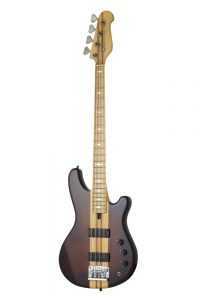 comes into play with this choice. No orchestra conductor will allow a bass guitar player in the orchestra and there are some purists out there who frown on bass guitars in jazz or traditional country music. If you like effects pedals, it is much easier to run a bass guitar through pedals than an upright bass with a pickup installed (with acoustic pickups there tends to be more possibility for feedback).
comes into play with this choice. No orchestra conductor will allow a bass guitar player in the orchestra and there are some purists out there who frown on bass guitars in jazz or traditional country music. If you like effects pedals, it is much easier to run a bass guitar through pedals than an upright bass with a pickup installed (with acoustic pickups there tends to be more possibility for feedback).
However, you can also find electric upright basses on the market today. These basses are much slimmer than their acoustic counterparts, but the neck is the same length and they are designed with magnetic pickups, like a bass guitar, rather than piezo pickups installed on acoustic upright basses. They are a fairly modern invention that make a good alternative for those who want the sound of an upright bass, but want something a bit more portable.
Bass Guitar Types

Several types of basses exist on the market today for those looking to play bass guitar. The most traditional bass guitar is the P-Bass. It was the first electric bass guitar invented. It has a split coil humbucker pickup (meaning the dual coil of the humbucker is split between the strings giving a hybrid sound of a single coil and humbucker) and a cutaway body style. Although it was the first type of electric bass invented, a good P-Bass is still one of the most sought after types of basses on the market today. Turn the tone knob low and you get a deep, almost rumbling sound. Turn it high and you get a sharp tone that still has great low end.

The next most common electric bass type is the Jazz bass. It features two single coil pickups and a narrow neck. You can blend the tones between the two pickups allowing for more nuanced tone control. As the name suggests, the Jazz bass is great for jazz, but it also has a punchy tone making it good for slap bass or music in which you want the bass to cut through more rather than sit in the deep bass sonic pockets.
You can also find bass guitars with one or two humbuckers. Like the electric guitar humbuckers, bass guitar humbuckers generally have a bit of a thicker sound than a P-Bass or Jazz Bass. On bass guitars with two pickups you can blend the tone and volumes of the two pickups to get a particular tone you want. Generally on the guitars with two humbuckers the neck pickup is a bit punchier while the bridge position pickup has the thick low-end, so with the volume and tone knobs you get a lot of customization for the tone.
One other type of bass guitar is the acoustic-electric bass. These types of basses look like acoustic guitars, but are made the same size as any other electric bass. You can hear them without an amp so they are great for playing outside or at a moment’s notice if you don’t have an amp and cables handy. They also have piezo pickups, which are different than other electric bass guitar pickups, so their tone is a bit different. Piezo pickups are more prone to feedback so adjust volume slowly (especially when using pedals).
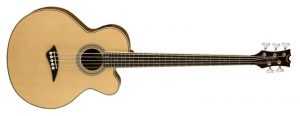
Other Considerations for Bass Guitars
There are a few other options to consider if you decide you want a bass guitar. One of them is the number of strings. Traditionally, bass instruments are designed with 4 strings. However, you can find any type of upright or bass guitar with 5 or 6 strings. 5 string basses come with a string lower than the traditional E string, the low B, and 6 string basses have the low B and a string tuned higher than the G string, a high B. Some players find the extra strings useful. You can find different chord shapes, have a greater frequency range than a traditional bass, and conserve some hand movement with notes being more accessible on more parts of the neck. However, some bassists prefer the traditional 4 strings claiming that you can find any sound you need with 4 strings and these extra notes on a 5 or 6 string bass do not belong in the bass range.
Another consideration for a bass guitar is whether or not you want frets. A fretted bass guitar is more common, however you can find fret-less bass guitars as well. This will give you the ability to slide and have a smoother tone similar to an upright bass. In the beginning it can be more difficult to find the exact notes on a fret-less bass, but with a little practice playing a fret-less bass will become natural.
Finally, one last consideration for your perfect type of bass guitar: the scale of the neck. A bass guitar fretboard that is the full, traditional length is known as full scale. You can find ¾ scale bass guitars as well as short scale bass guitars. On the shorter scale bass guitars the frets are closer together making it easier to navigate between frets for those with smaller hands. Short scale basses may have fallen into a bit of obscurity and have gotten a reputation as being for children or beginners, but this is hardly the case.
This blog entry has covered most of the types of basses available on the market today. You can find traditional basses made with the same process for hundreds of years as well as types of bass guitars or electric upright basses that didn’t exist thirty years ago. Every element of a bass will change its tone and it is important to find the elements to create the right tone for you.

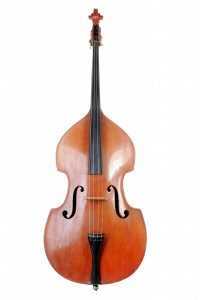

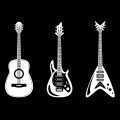

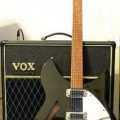


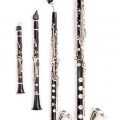
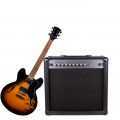
Michael,
Nice, easy-to-read andvcompact overview! But the high string on a 6 string bass is most typically a C (not a B).